Browse Primary Sources
Locate primary sources, including images, objects, media, and texts. Annotations by scholars contextualize sources.
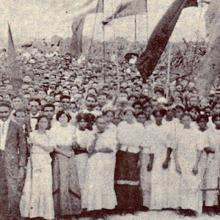
Sugarcane Workers Strike
After the United States's occupation of Puerto Rico in 1898, agricultural production shifted from a diverse model of production to a mono-agricultural model of growth, where sugar was the main crop. American companies’ preference for cultivation of sugar over coffee and other crops broke with a long tradition of coffee haciendas or plantations.
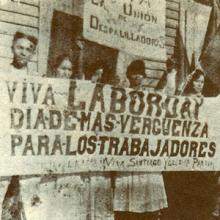
Workers’ Celebration
When Americans arrived on the island, the labor movement in Puerto Rico was in its infancy. Labor leaders were aware of the reputation of the U.S. labor unions, so they worked to affiliate with the American Federation of Labor (AFL) as early as 1899. Local labor unions adopted the celebrations and rituals of similar unions in the United States and around the world.
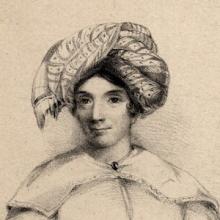
Lady Florentia Sale Diary
Lady Florentia Sale (1790-1853), wife of Major-General Sir Robert Henry Sale, wrote a journal of her experiences during the First Afghan War. In January 1842, in what is usually seen as a humiliating defeat for the British army, 4,500 British and Indian troops with around 12,000 camp followers retreated 116 miles from Kabul back to the British garrison at Jalalabad.
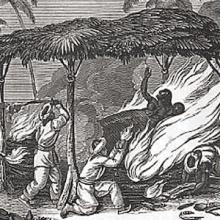
Sati Engraving, Burning a Hindoo Widow
Toward the end of the 1700s, the evangelical movement in Britain argued that one’s commitment to Christ should be reflected in action, primarily the effort to end slavery in the British empire and to proselytize or seek converts among the “heathen.” Initially, the English East India Company had prohibited Christian missionaries from living within their territories and seeking Indian converts in
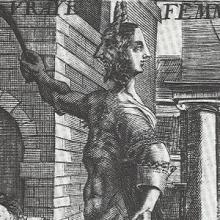
The True Woman
This is a 17th-century French engraving entitled The True Woman. Although its author and its circulation to the public in general is not precisely known, engravings such as this one were ever more popular in the 16th and 17th centuries, when the power of the newly-invented printing press to reach the masses became apparent.
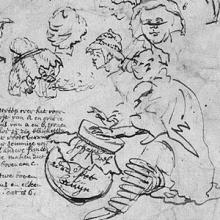
Drawing of Khoi Dancers
In the late 17th century, an anonymous artist did a series of impromptu sketches and set pieces showing Khoikhoi at the Cape of Good Hope.
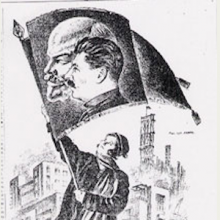
Woman with Lenin/Stalin Flag
Articles and images published in Soviet newspapers on March 8, International Communist Woman’s Day, provide the most obvious examples of how women were used as symbols in a propaganda campaign. These texts and images were clearly intended to convey a certain message about the changing role of women in the Soviet system.
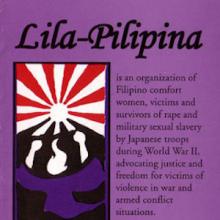
Lila-Pilipina Brochure
The Lila-Pilipina Brochure is a creation of the feminist group of Filipino “comfort women" called Lila-Pilipina, who have banded together with feminist goals/messages for peace. "Comfort women" were women during World War II forced into sexual slavery by the Japanese military, although it took decades for this to be acknowledged, and to this day is not acknowledged in Japanese history books.
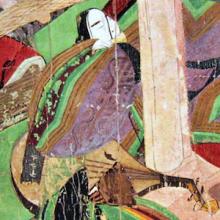
Lady of the Bridge, Tale of Genji Painting Scroll
The greatest work produced during the Heian era was The Tale of Genji by Murasaki Shikibu, lady-in-waiting to Empress Akiko. Considered the world’s first novel, Genji is written as an absorbing portrait of Heian court life, the splendor of its rituals, and aesthetic culture.
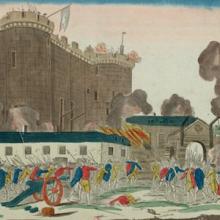
Taking of the Bastille
The "bravery of the citizens united against" the royal army, as the text suggests, enabled them to conquer in four hours a fortress that had defeated invasions since 1368.

Taking of the Bastille
This painting emphasizes the populace’s participation in the storming of the Bastille, showing the urban population fighting under a red banner with muskets, swords, and pikes against the royal soldiers.
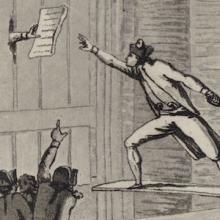
The Third Incident of 14 July 1789
This engraving from the Berthault series depicts Stanislas Maillard bravely climbing on a plank over the dry moat surrounding the fortress to accept from one of the soldiers Launay’s "capitulation" of the Bastille.
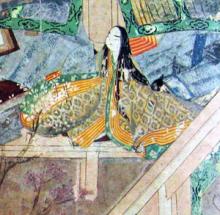
Bamboo River II, Tale of Genji Painting Scroll
The greatest work produced during the Heian era was The Tale of Genji by Murasaki Shikibu, lady-in-waiting to Empress Akiko. Considered the world’s first novel, Genji is written as an absorbing portrait of Heian court life, the splendor of its rituals, and aesthetic culture.

Photograph of Fatima the Moroccan
By 1900, only the Kingdom of Morocco remained more or less independent of European rule, although European competition for Morocco was intense between Spain, France, and Germany. Between 1899 and 1912, French armies progressively occupied the country using Algeria as a base.
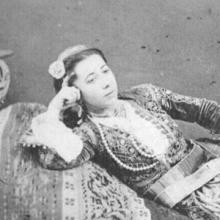
Beautiful Fatima
Photography was critical to imperialism. The French army (and the British army in India) employed the camera’s lens to chronicle military exploits, first in Algeria during the 1850s, and later in Tunisia and Morocco. With advances in photographic technology, portrait studios were established in Europe and in European empires.

Malinche Sculpture
A sculpted figure by an internationally-recognized Native American activist, writer and visual artist. The materials chosen by Jimmie Durham create an image of Malinche that seems emptied of life and perhaps not fully human. He stresses the darker underside of Malinche’s history. Her face is half human, half snakeskin. Scrawny legs, made of polyester batting, cannot support the figure.
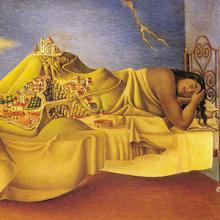
The Dream of Malinche
This painting, by a Mexican artist engaged with the international movement of Surrealism, represents a slumbering Malinche; her body serves as the ground supporting an unnamed Mexican community and church. This image evokes certain female earth deities known to the Aztecs, and it sustains the metaphor of the Mexican nation having been built upon the “ground” laid by Malinche’s actions.
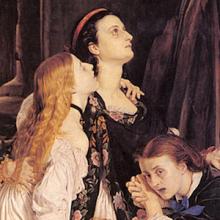
In Memoriam
In 1857, British rule in India was challenged when Indian sepoy troops of the British Indian Army began a year-long insurrection against the British. To the British, the most shocking aspect of the events in India was the massacre of white women and children by Indian men. There was extensive coverage in the press and illustrated journals, which stimulated calls for revenge.
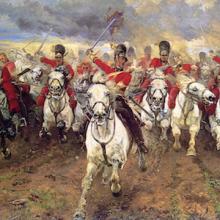
Scotland Forever
Painted by Elizabeth Butler, Scotland Forever (1881), depicts the charge of the Heavy Cavalry at the battle of Waterloo fought in 1815. The British victory at Waterloo ended the Napoleonic Wars, and ensured Britain’s position as the worlds most dominant imperial power.
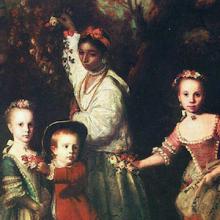
The Children of Edward Holden Cruttenden
This 18th-century painting of the children of Edward Cruttenden depicted with their ayah was painted in Britain by Joshua Reynolds. The earliest immigrants from India came to Britain as the servants of employees of the East India Company. Many Indian women came to Britain employed as ayahs or nannies.